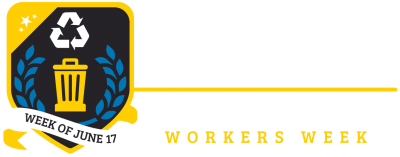What is Zero Waste?

Most people probably don’t think too much about the trash they throw away. After all, we’re all so busy with work and family and scrolling through Facebook that it’s easy to overlook the food and packaging and water bottles we go through on any given day.
But while most may not think too much about waste, there are some of us who think about it a lot…a whole lot. In fact, there are companies and organizations that have made it their business to figure out how to generate less, how to dispose of less, and how to define when we achieve some variation of a “Zero Waste” goal.
And while zero waste may sound pretty straightforward, it can actually be more complex than you might think.
What is Zero Waste?
Generally, “Zero Waste” is a philosophy of eliminating the generation of materials that have no viable or economic option for end-of-use management. In reality, there are varying interpretations for when (and if) it is achieved. Does zero waste really mean zero waste? Does it consider the waste that’s produced in the production of materials upstream? Is a small amount of waste acceptable at the end of a material’s end of life? What about Waste-to-Energy? The definition of zero waste varies widely, with various organizations defining zero waste differently, each with their own interpretation as to what it takes to get to “zero.”
The generation of waste can be lowered through a variety of options, including reducing, reusing, recycling, or taking appropriate action to prevent waste through design and engineering solutions. Many individuals, companies and municipalities continue to strive to achieve zero waste goals, while our very own Waste Management Phoenix Open is the largest zero waste event of its kind in the world.

Zero Waste Certification
Because Zero Waste definitions vary, a handful of organizations have created Zero Waste Certification programs. While these organizations all use different definitions and standards in their certification programs, Waste Management has relied on the premier global standards company UL to validate the Waste Management Phoenix Open zero waste claims. UL has created definitions for Zero Waste to Landfill and a corresponding certification process, under which are three levels:
- 100% diversion from landfill – which allows some waste to go to waste-to-energy facilities
- “Virtually Zero Waste” with 98% landfill diversion – UL has other levels
- “Landfill Diversion” label – 80 percent or more of material is diverted from landfill
UL evaluates the entire Waste Management Phoenix Open event for Zero Waste certification. This involves extensive review of records and processes before UL will certify any event or facility as “zero waste.”
How is zero waste measured?
For the last 5 years, Waste Management has achieved the goal of diverting 100 percent of waste from a sporting event that sees more than 650,000 fans in attendance over the course of one week.
To meets UL’s strict standards, the Waste Management Phoenix Open is planned year-round with zero waste in mind, and we do lots on-course to make sure waste material is reduced, reused, recycled, donated or avoided entirely (more on that here). After the tournament, Waste Management conducts audits at our recycling facilities to ensure compliance with the prescribed zero waste guidelines, and then works with UL for third party oversight and validation.

Is zero waste the best goal for the environment?
The answer may be more complex than you think. That’s because – in the end – diversion for its own sake has no value if the materials collected for recycling and composting are not turned into worthwhile commodities that can be sold and made into marketable products. In fact, in some cases, diverting materials can increase negative impacts on the environment if a net increase in energy or emissions are a result of the diversion process. That’s to say that some materials may contribute to higher greenhouse gas emissions through either the recycling and composting process, or through transportation to a recycling facility.
That’s why it’s important for every program and material to be evaluated according to its full lifecycle impact to ensure your primary sustainability goal is being achieved, whether that’s high diversion or lower greenhouse gas emissions.
No matter what, the heart of any effective Waste Management program is not diversion, but avoidance. That means planning ahead on how to manage items that will be a challenge to recycle, whether that means reuse, donating, or using an item to produce renewable energy.
Starting the Journey and Best Practices
Before starting your zero waste journey, it’s best to keep in mind UL’s three steps to waste diversion: understanding, measuring, and rerouting.
- Understanding: Determine the current waste streams and approximate volumes
- Measuring: Establish goals for waste diversion and building processes for diverting the waste
- Rerouting: Divert waste from the landfill whether by routing it to other facilities that can use that waste as a raw material, sending materials for recycling, or leveraging waste products for energy production
Zero waste is a big challenge, and the first step to any challenge is understanding. As an exercise, think of the last three items you purchased. Could they be used again (reuse)? Were they made with recyclable materials and can they be recycled (reducing resources)?
